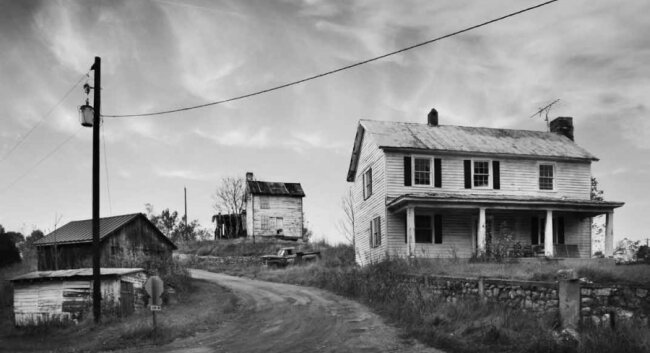Salvaging community history
If you believe that salvaging and restoring older homes is way to go green, then salvaging entire communities must be a way to go super green. Sadly, entire communities have been lost in Virginia, some without a trace, to make way for new construction. But thanks to a project initiated by the Community Design Assistance Center at Virginia Tech, the history of many of these places have been documented.
For instance, did you know that there were big plans to transform the Louisa County town of Mineral into a metropolis in the 1890s? Located in the so-called “gold-pyrite belt," a nine- to sixteen-mile-wide volcanic-plutonic vein that runs about 140 miles between Fairfax and Buckingham counties, Mineral City once seemed golden, the site of more than 15 gold mines and plans to lay out 152 blocks and put up 1,500 houses.
Indeed, a contract was signed with the Staunton Building Company. But the financial panic of 1893 brought the plans to a halt. Today, Mineral has a population of 424 scattered among the remnants of an ambitious block layout.
This is just one of 30 such stories Lost Communities of Virginia, which involved a drive-by survey of 2,600 small towns in Virginia and was eventually narrowed to stories that best represent the state's history in a book by the same name.
"They cover a wide range of different community types," says Terri Fisher, the Center's program director and co-author of the book, "from gathering places to company towns to transportation hubs– that really define the development of Virginia and many other states as well."
Fisher says the project began when designer Kirsten Sparenborg followed a green sign from US 460 in Giles County that said "Eggleston" just to see what was out there. What she found, or rather who she found, was Gladys Dowdy, the owner of a general store in Eggleston who spoke about the town's history as a popular railroad hub and hot springs resort a century ago. Sparenborg took many of the haunting black and white photographs in the book.
In the 1920s, Eggleston had numerous stores, a bank, factories, and other businesses. While Fisher defines it as a lost community, she points out that Eggleston, like many small towns in Virginia, continues to thrive– in a way. For instance, the recently opened Palisades Restaurant in Eggleston revived a historic general store.
The research involved in locating structures and landscapes that had vanished or never been realized must have been a daunting task. For example, in Almagro (part of the City of Danville) an empty field is all that's left of Peter's Park, a lighted baseball stadium that showcased the Danville All-Stars, a semi-professional African-American baseball team. In its heyday, the stadium would often fill with 4,000 fans, but according to Fisher, 14,000 showed up when Jackie Robinson and Roy Campanella came to play.
"We know that there are many more lost communities out there," says Fisher, "and they need to be documented through photographs, maps, and interviews with long-time residents before their history is lost entirely."
~
This is an edited reprint of an "On Architecture" story penned by McNair in the May 12 edition of the Hook.
